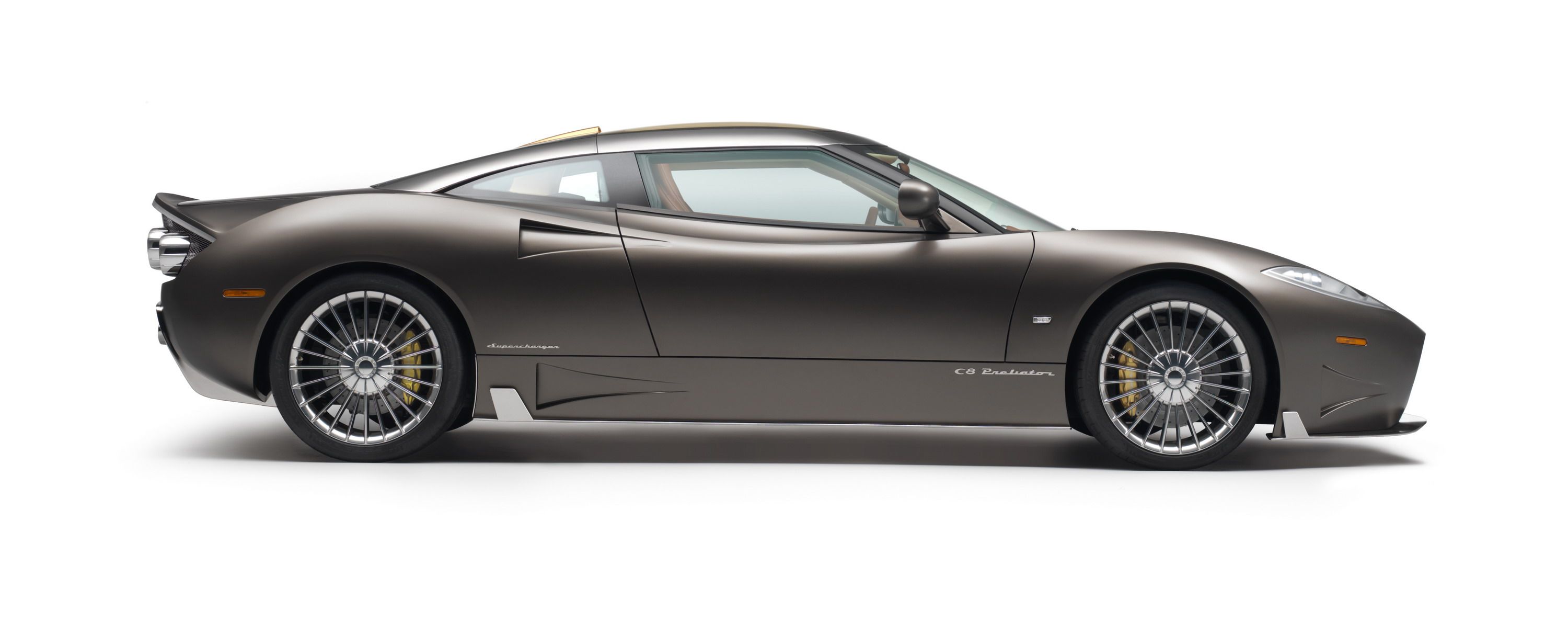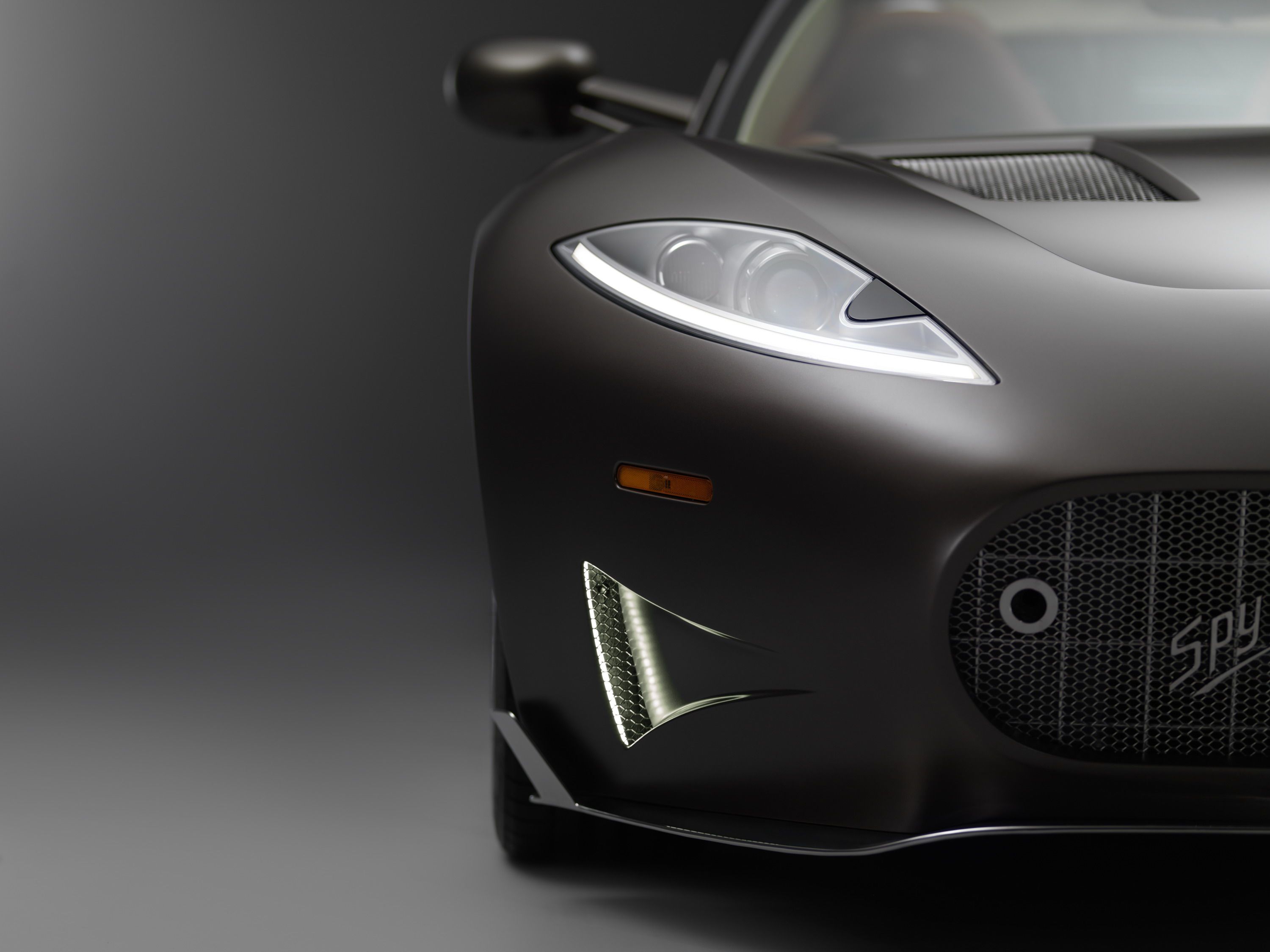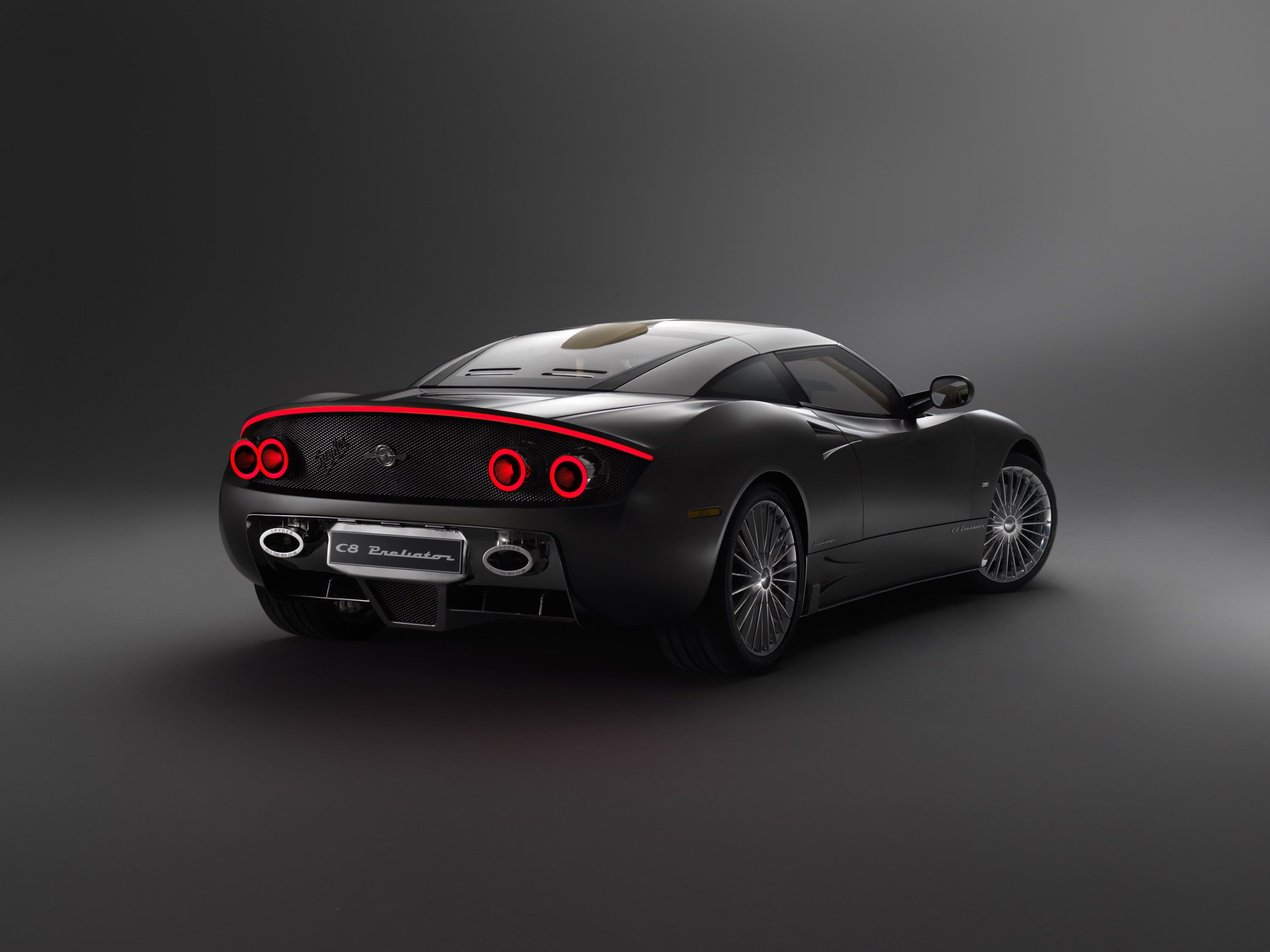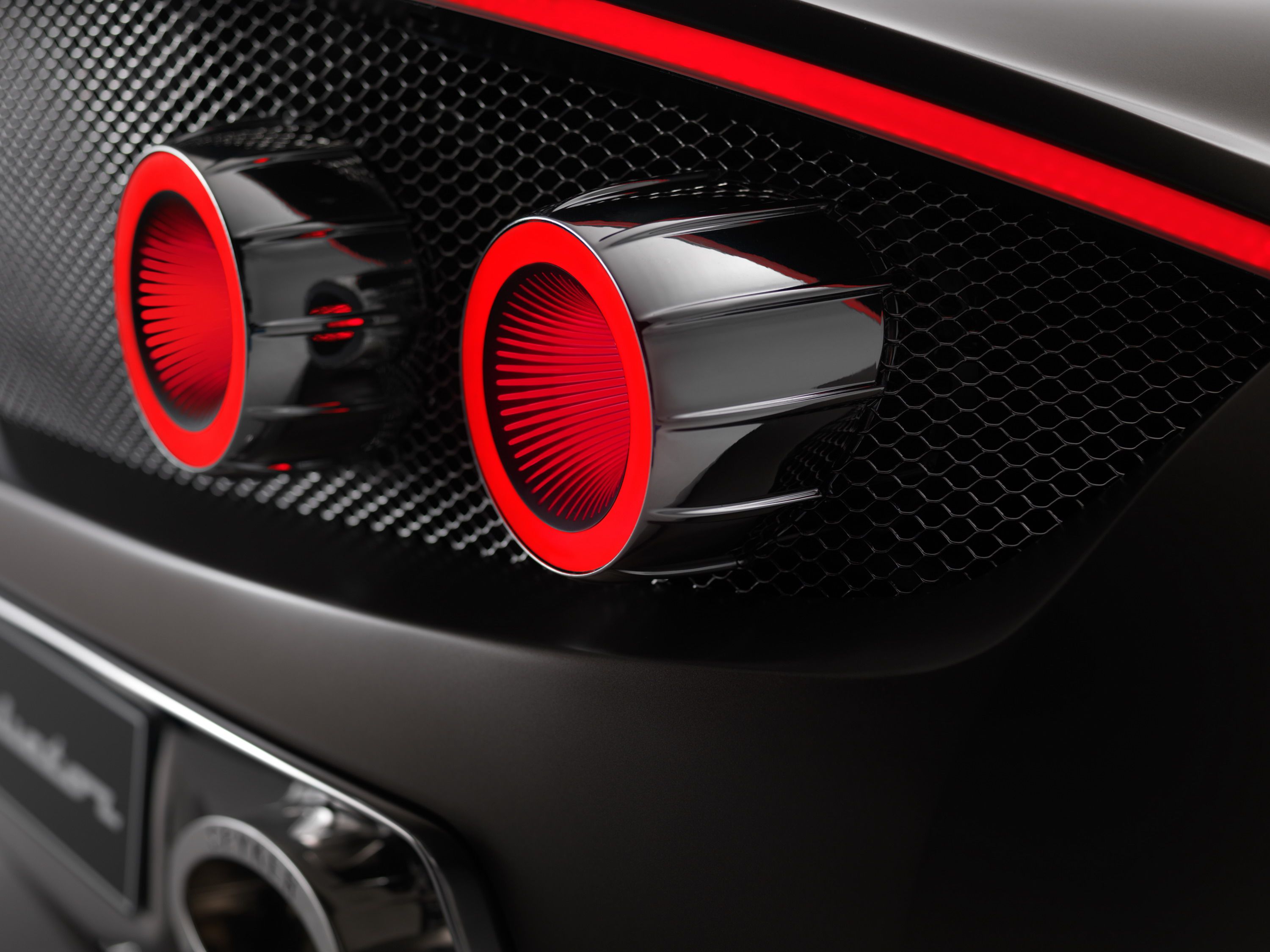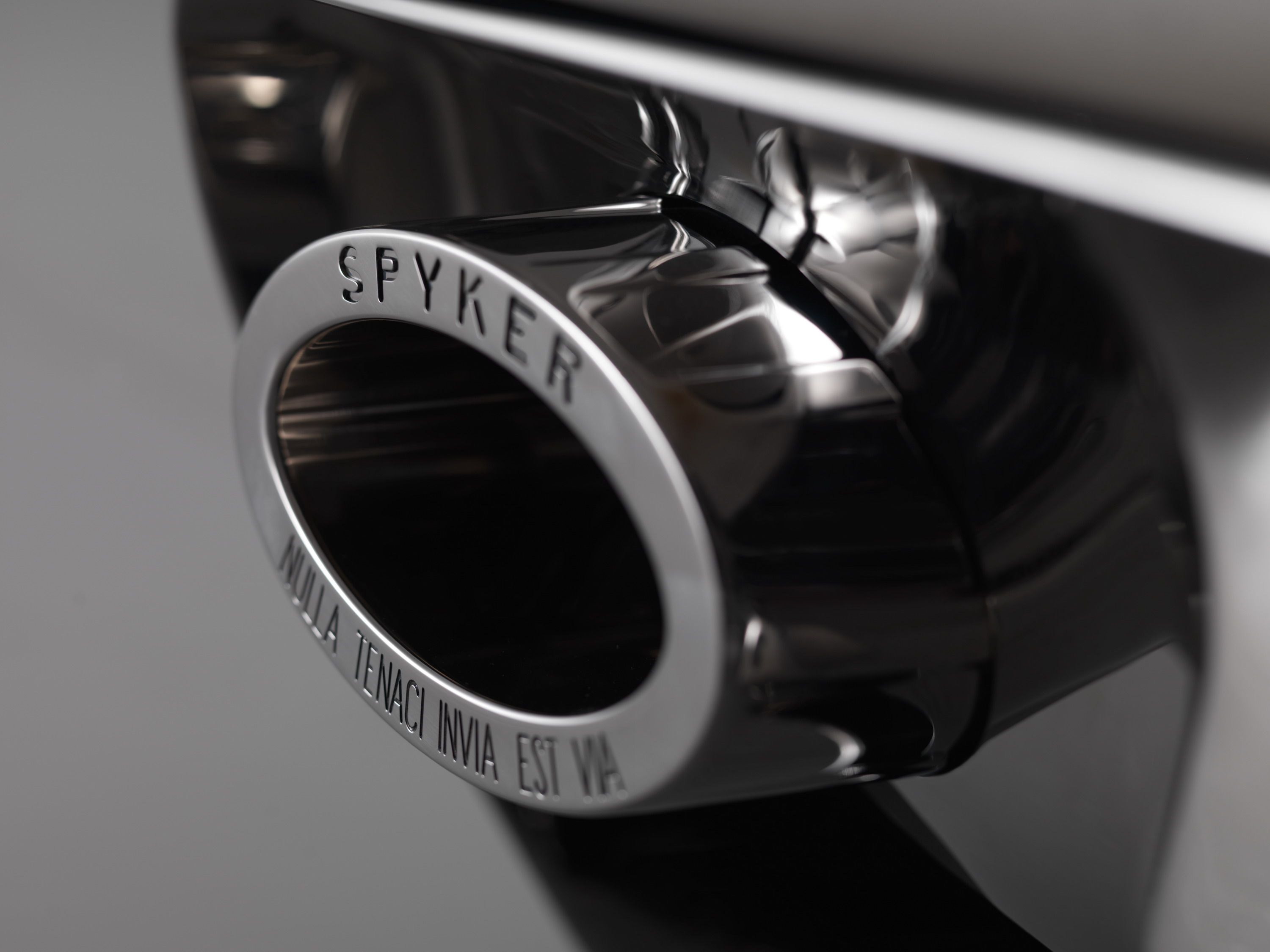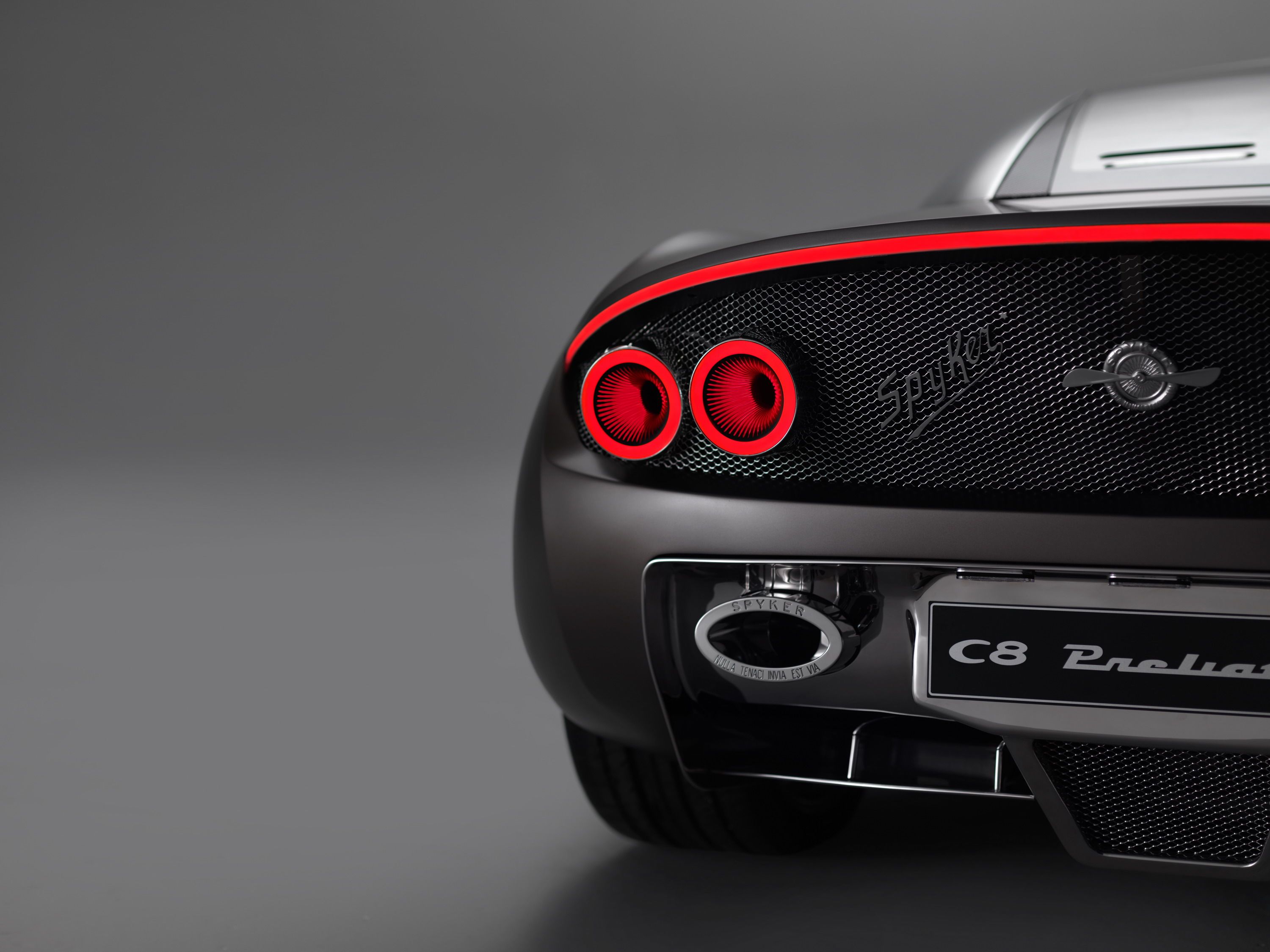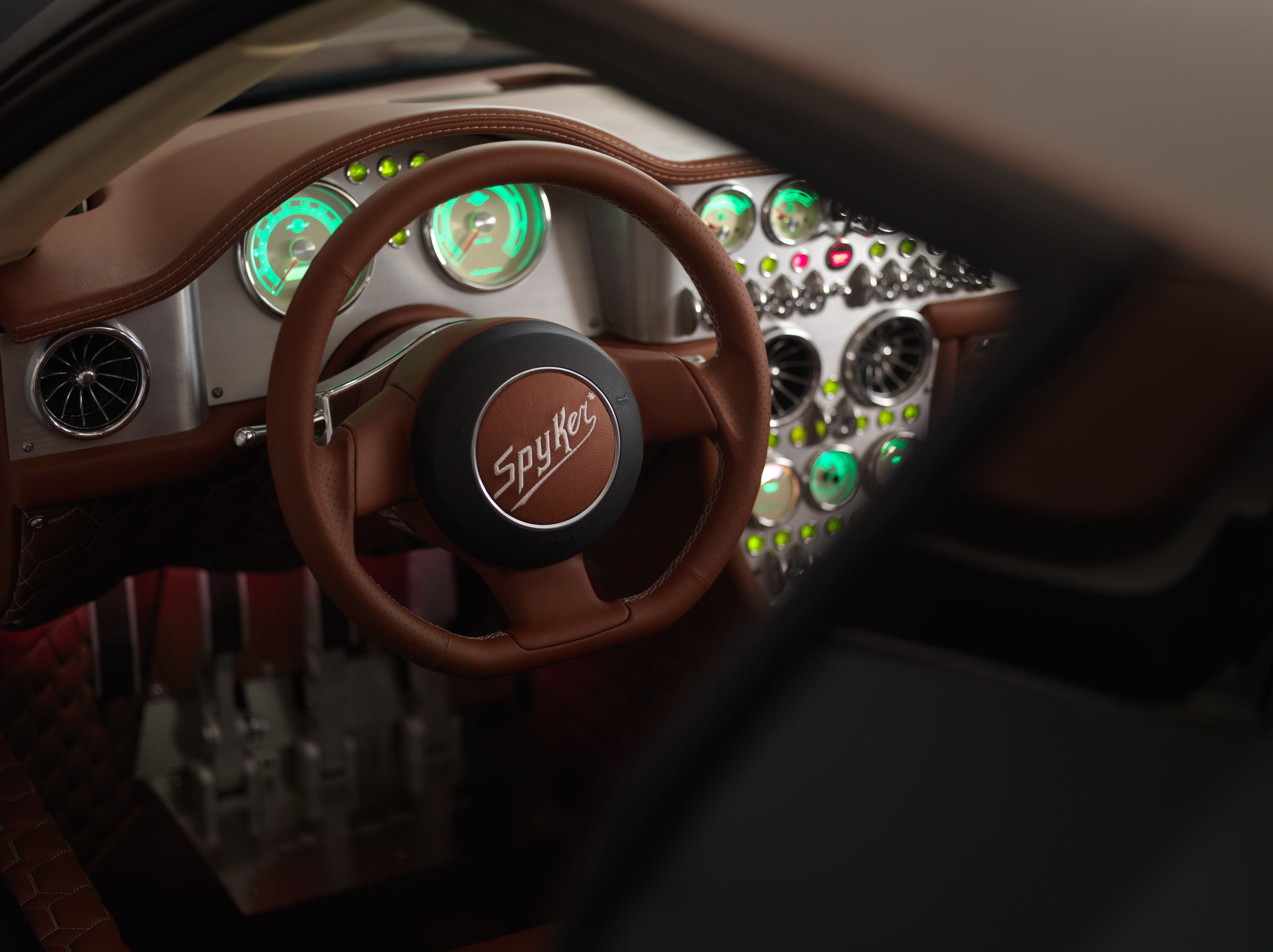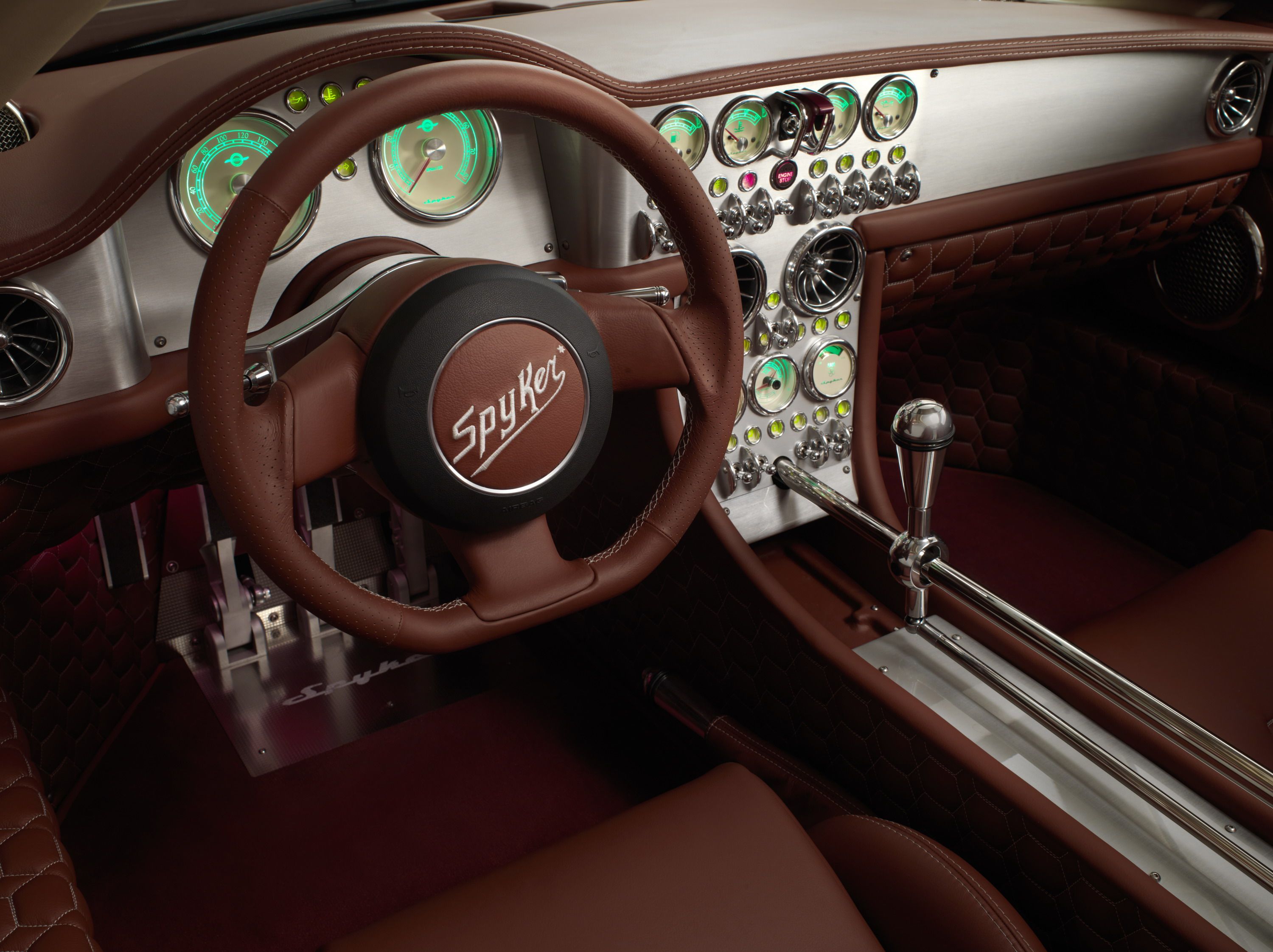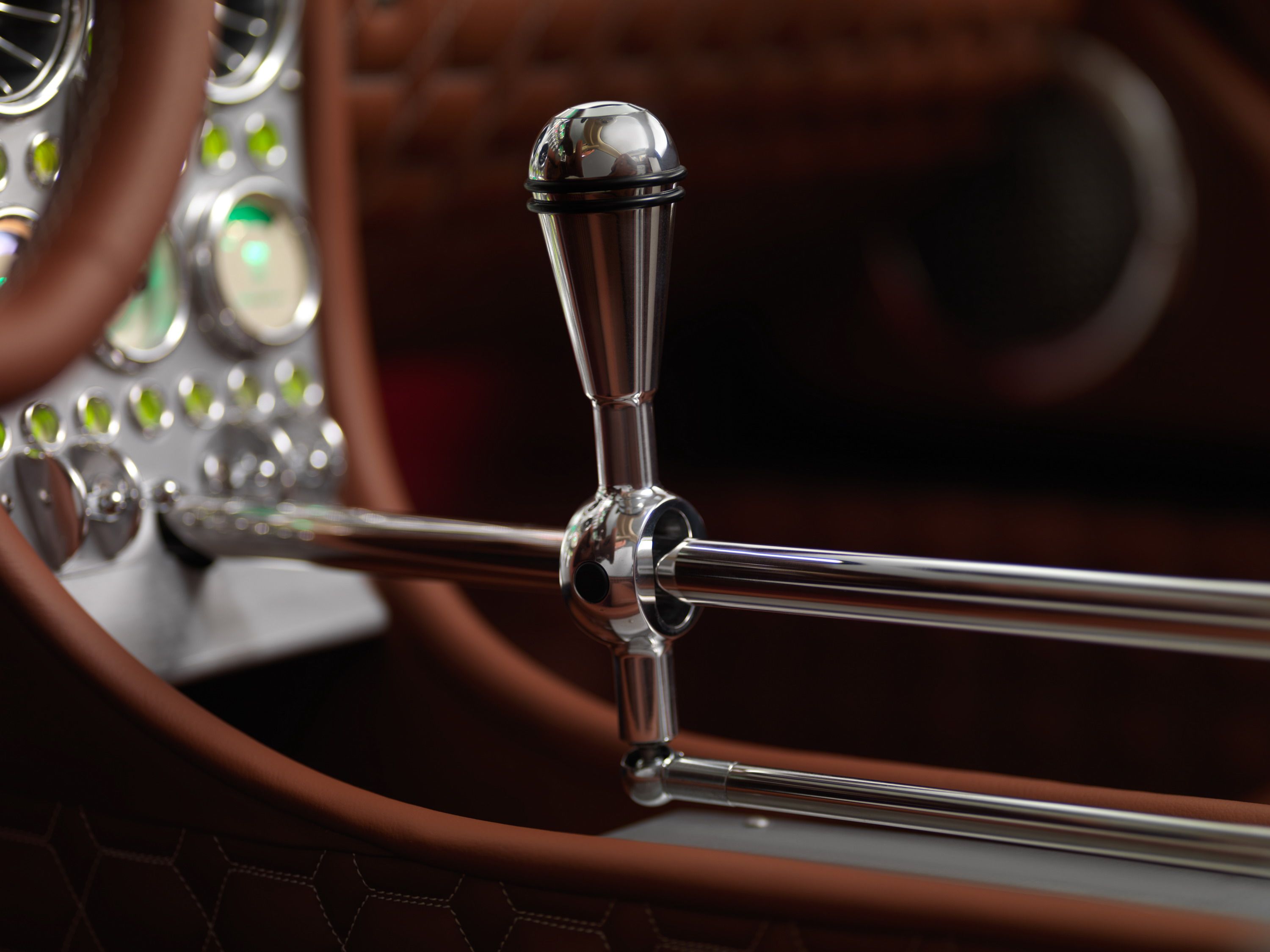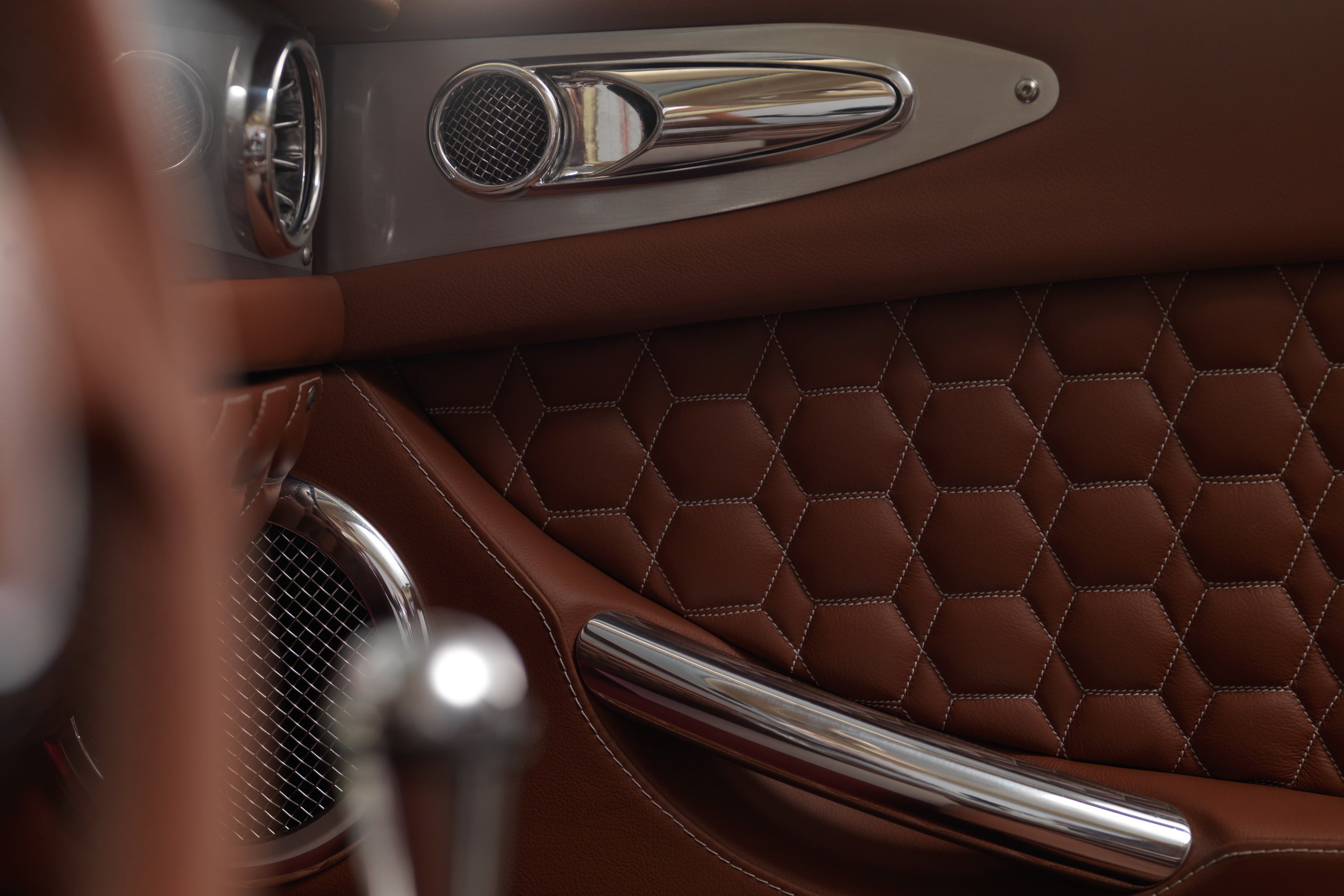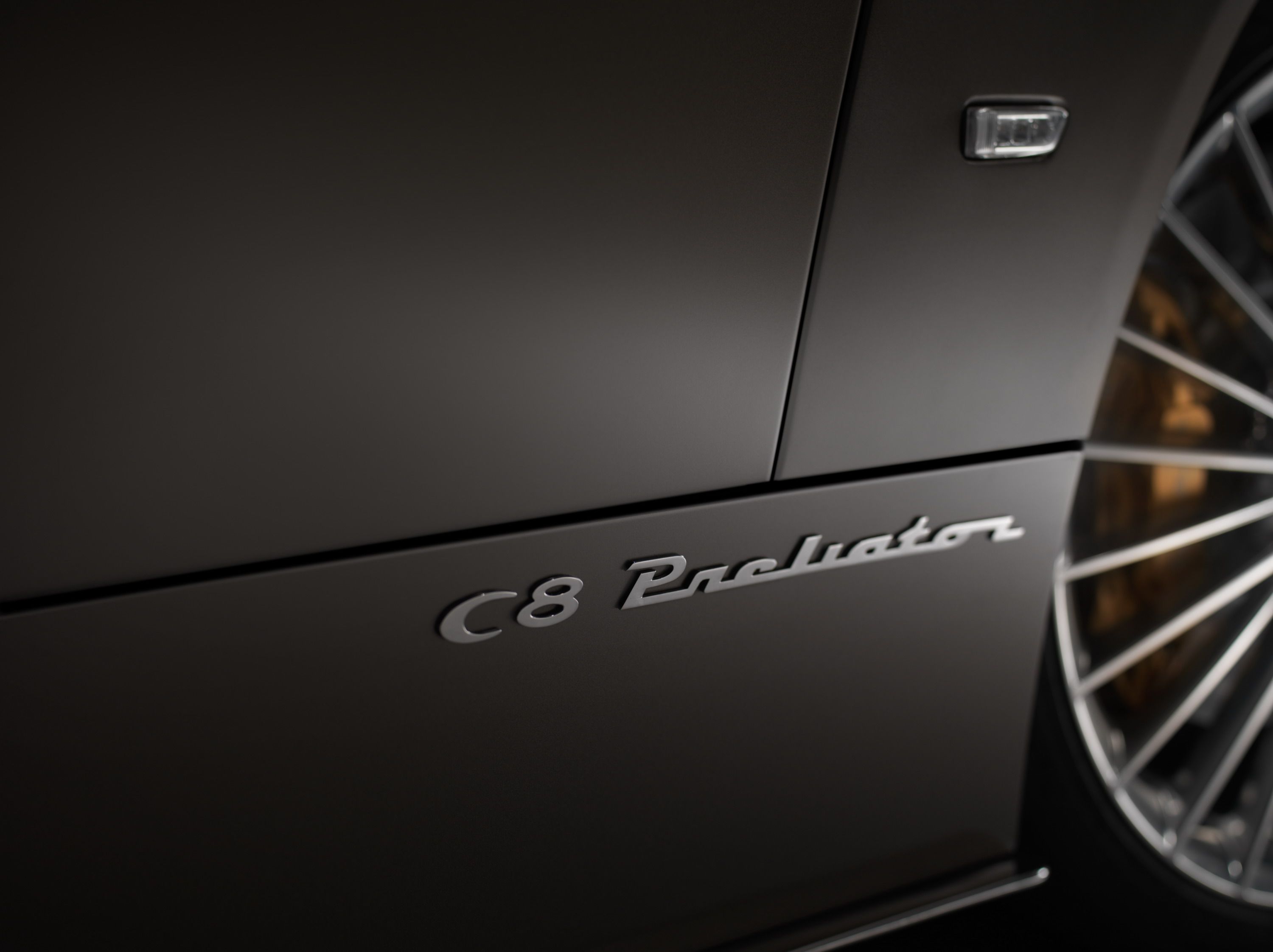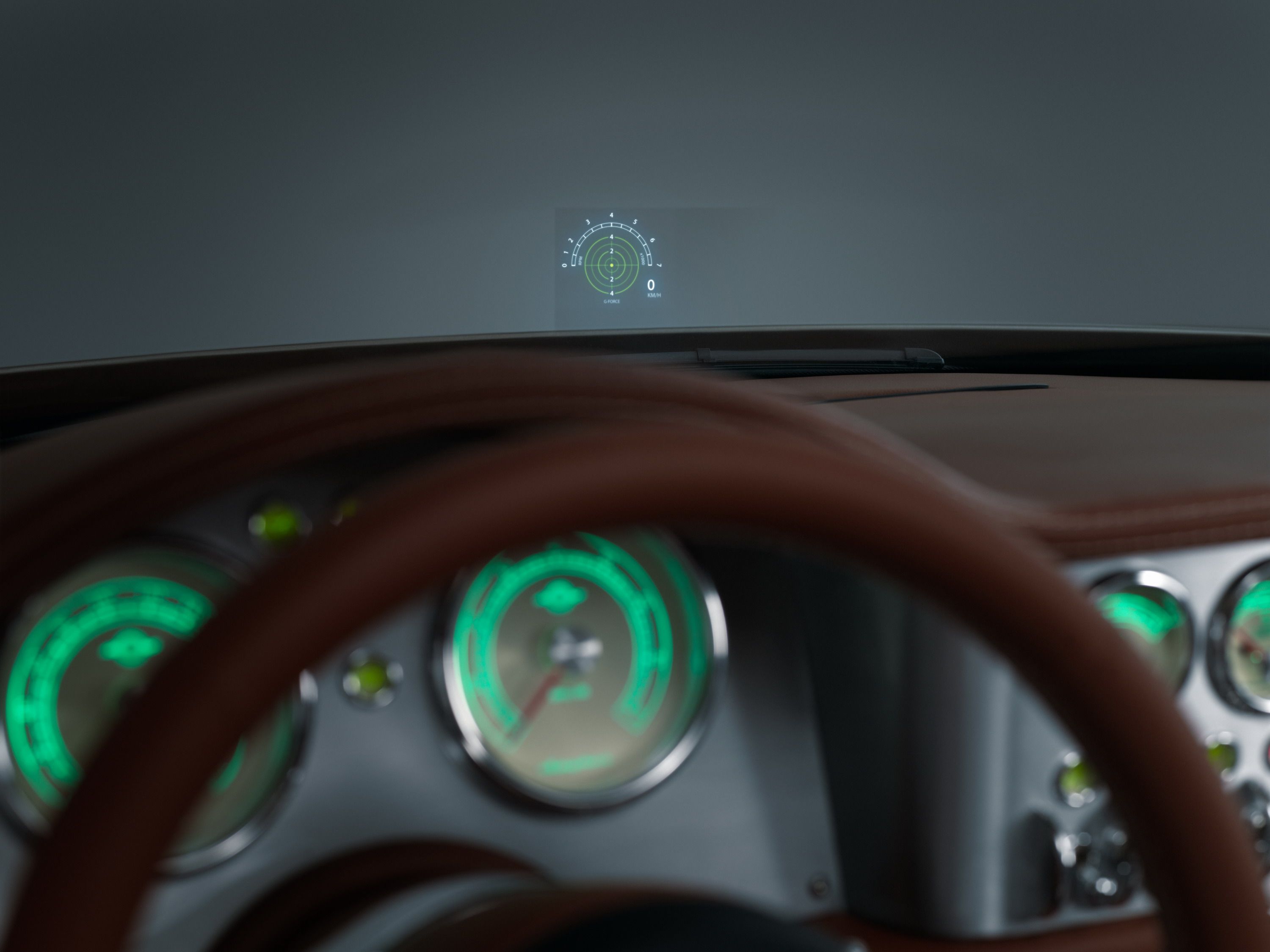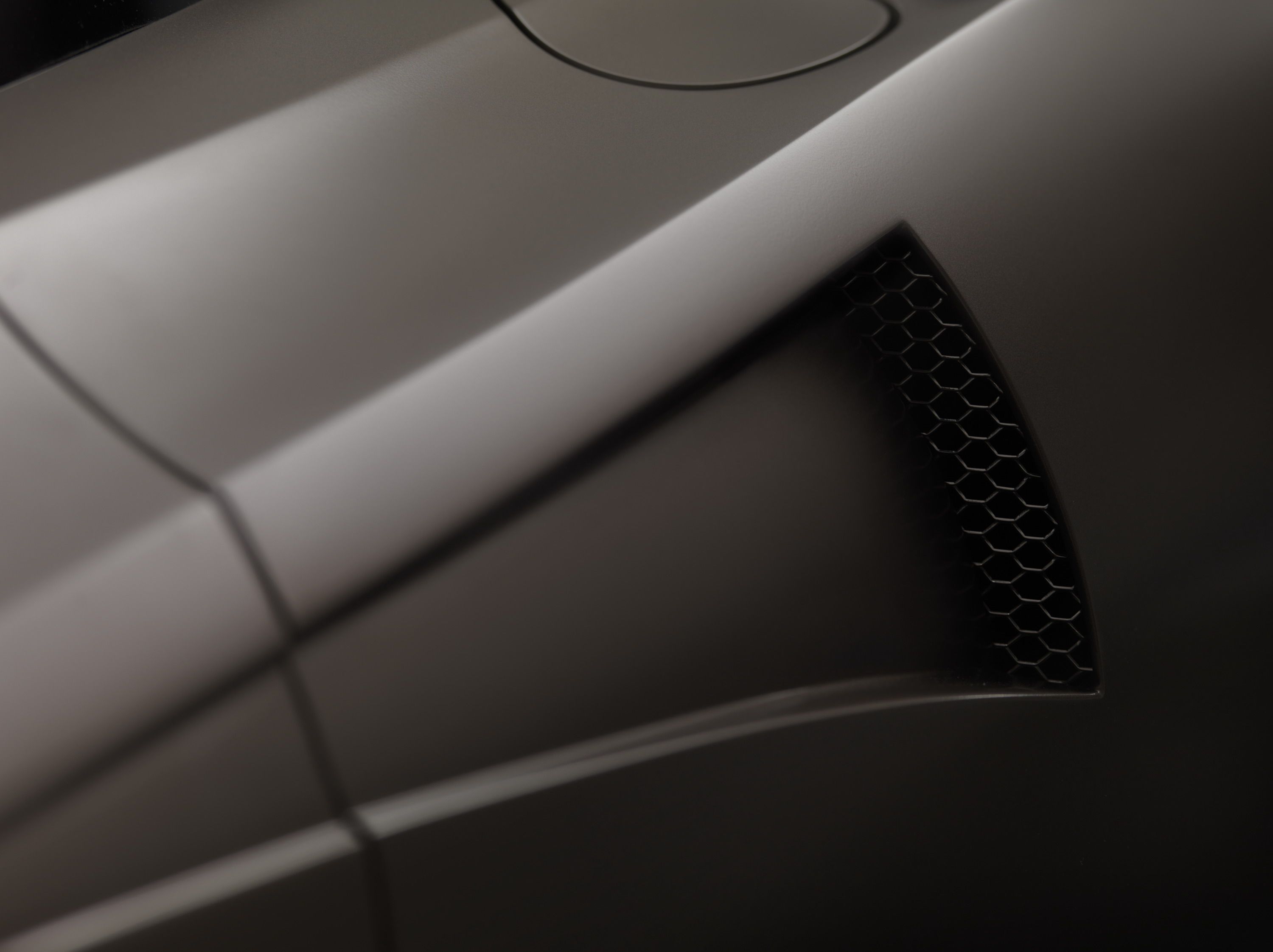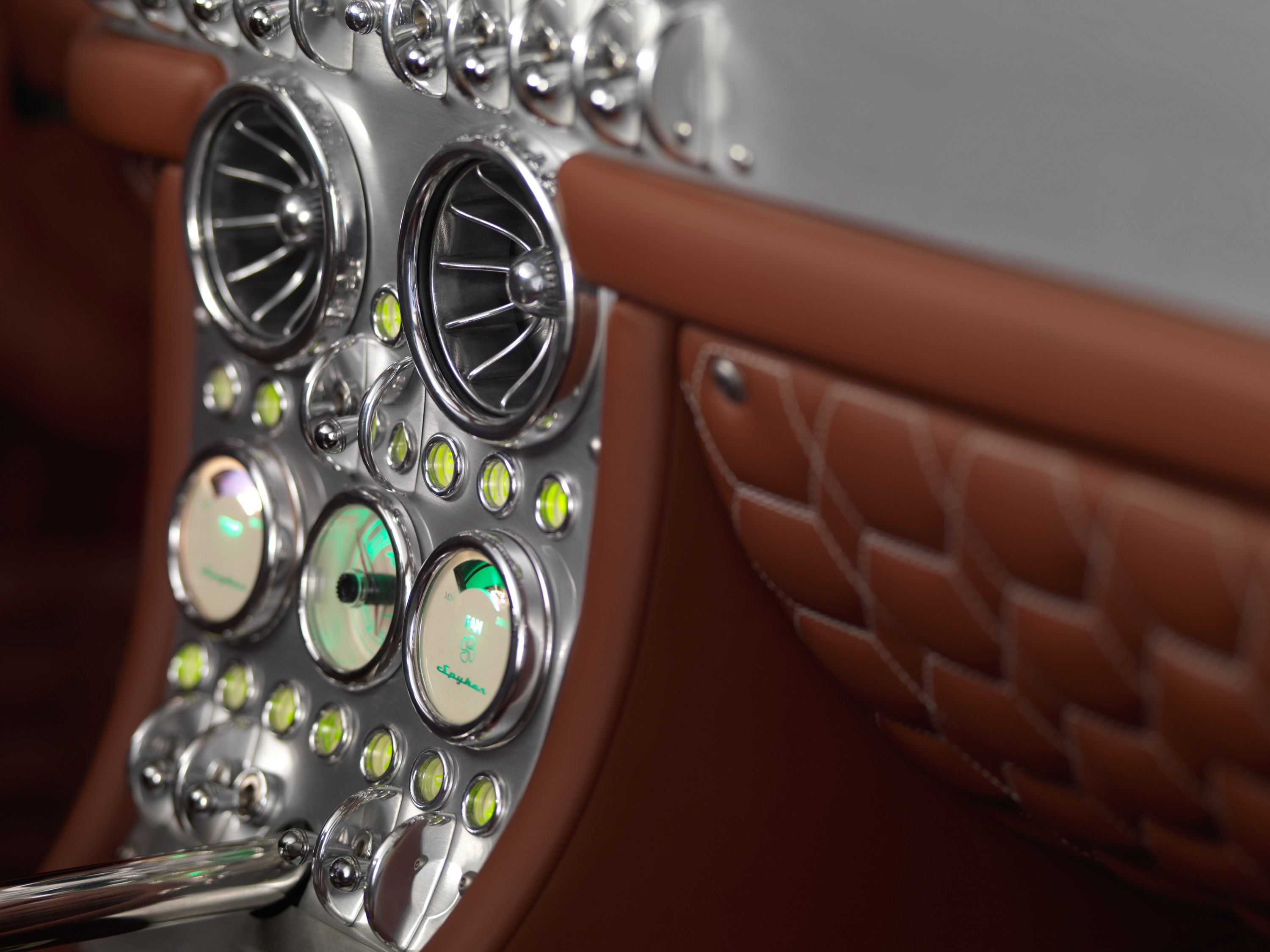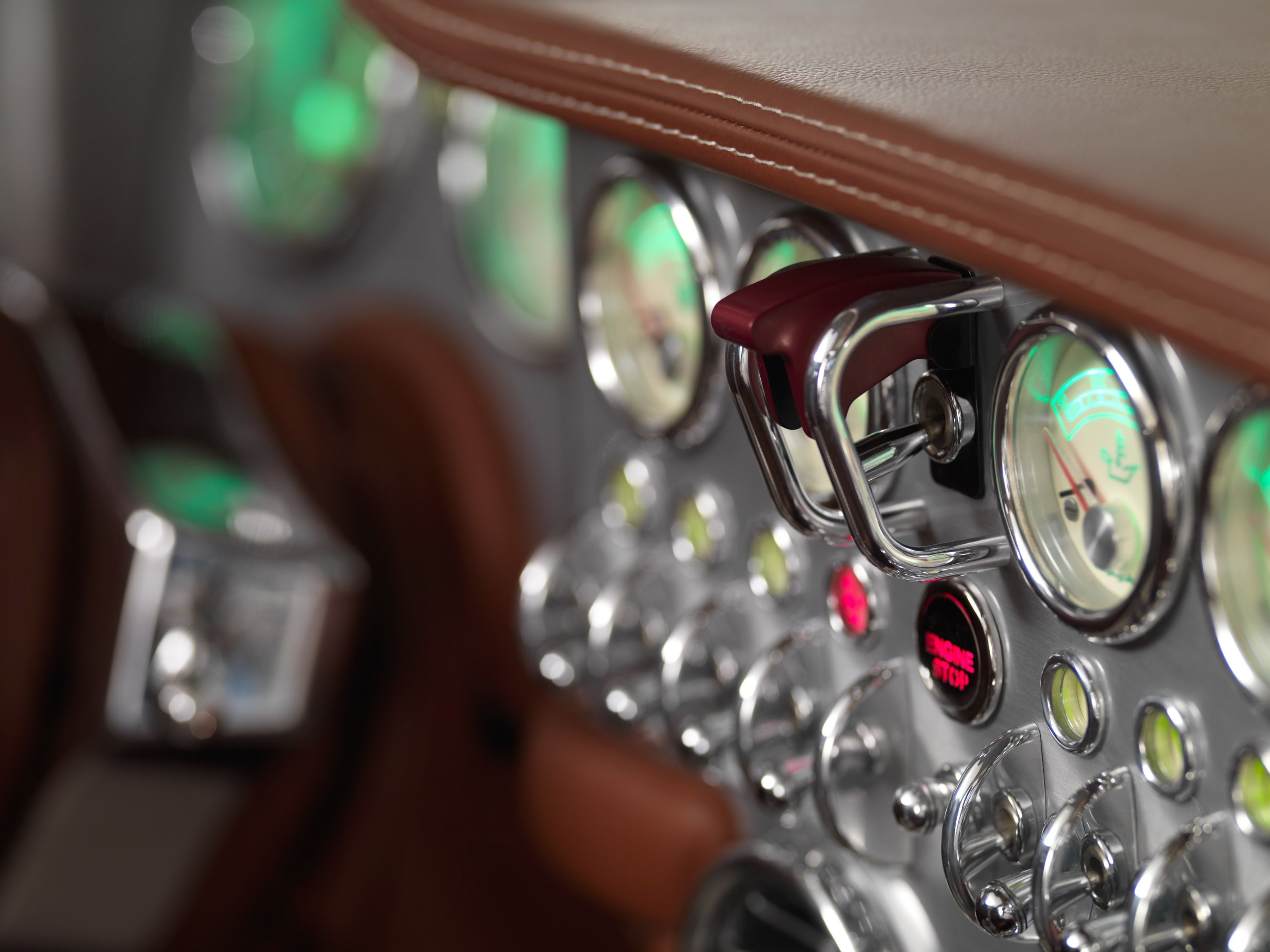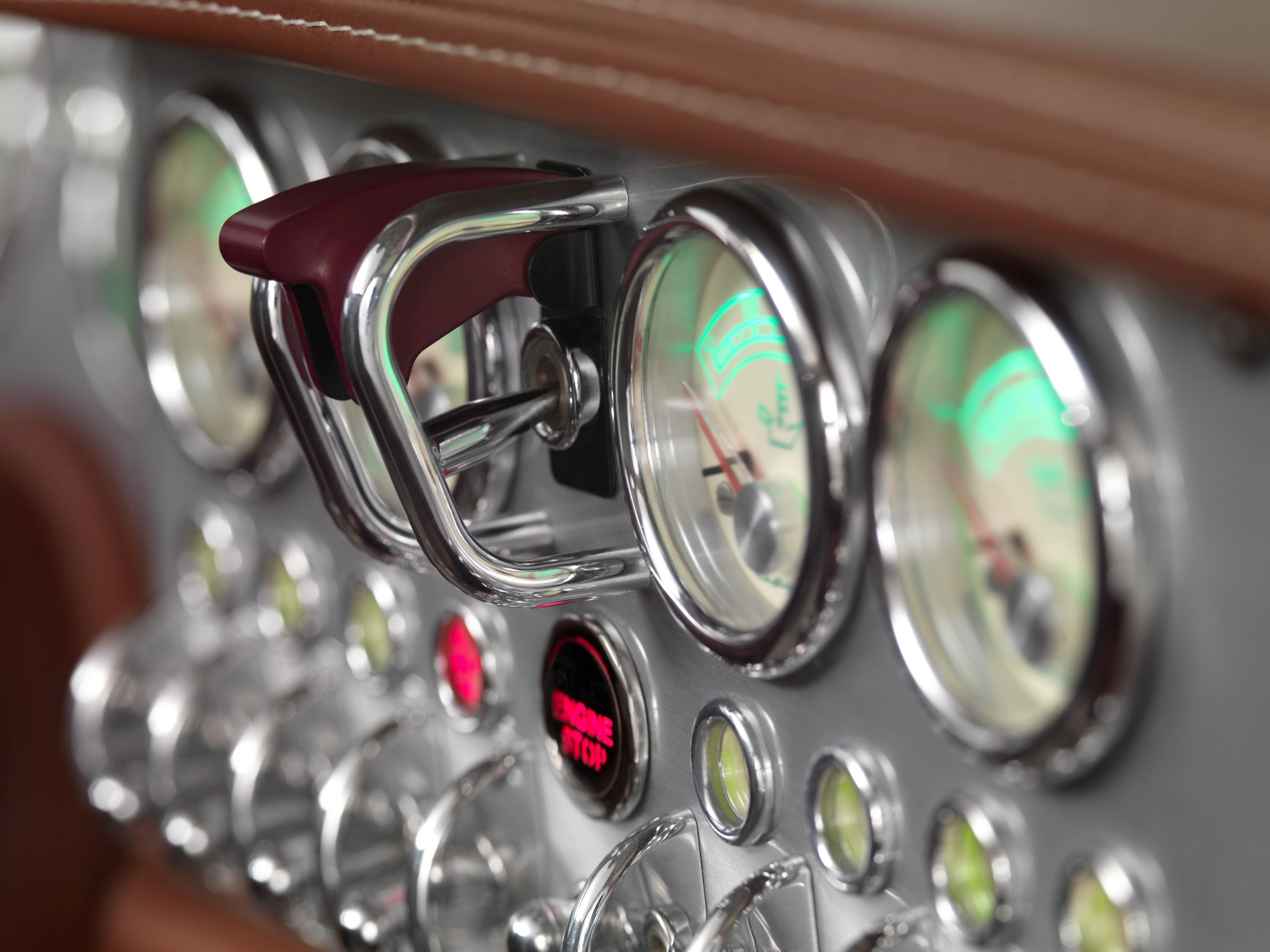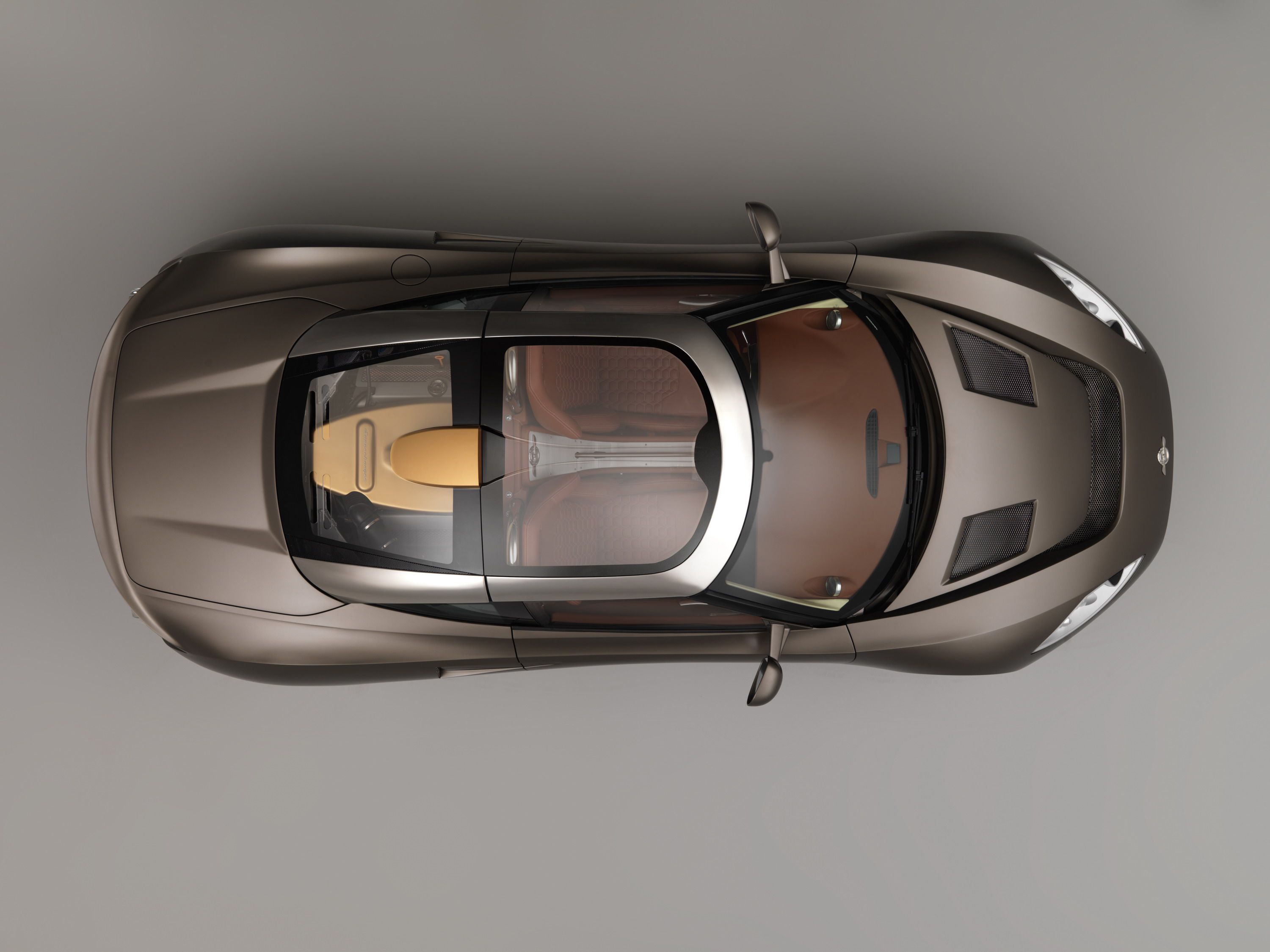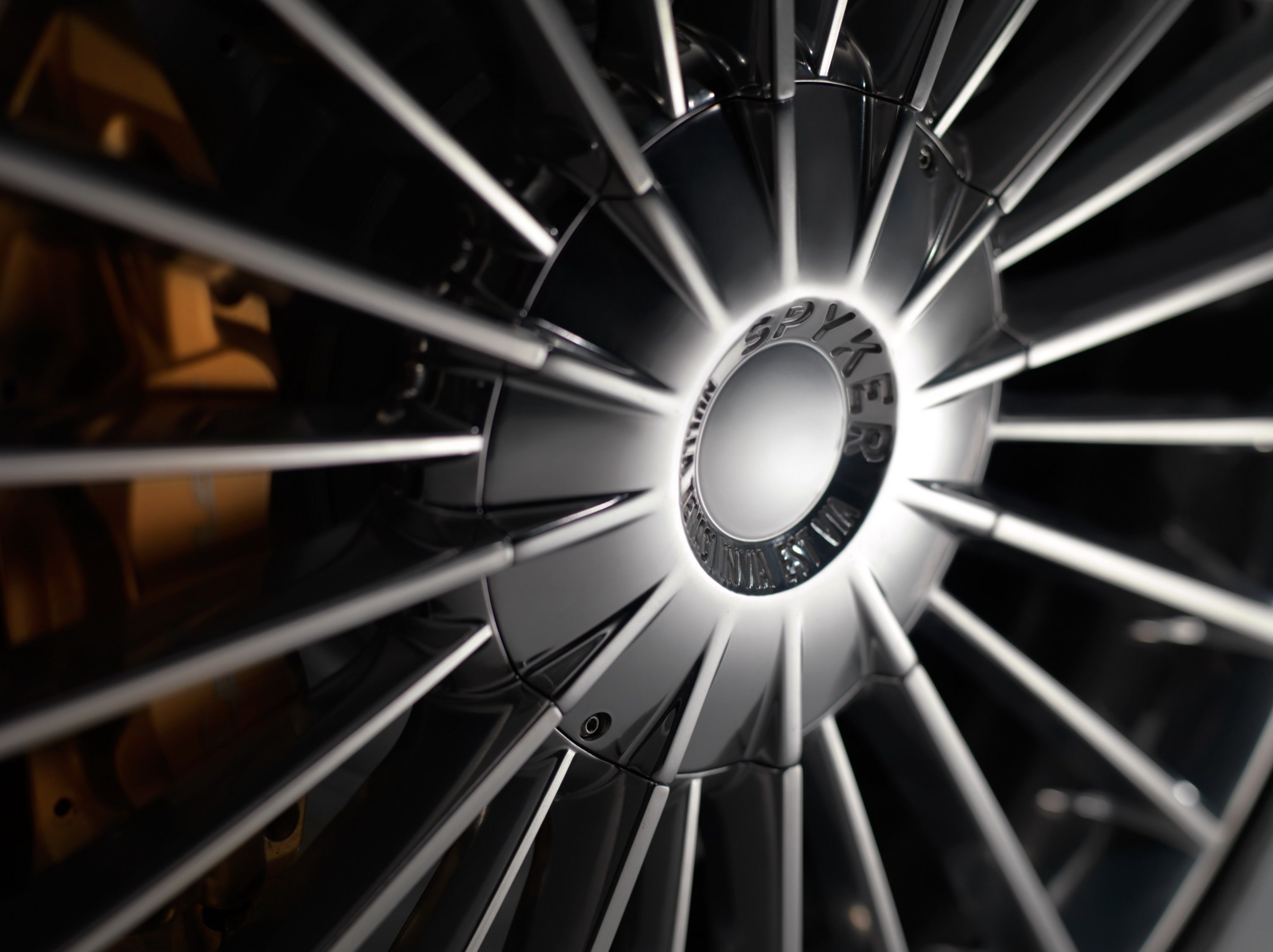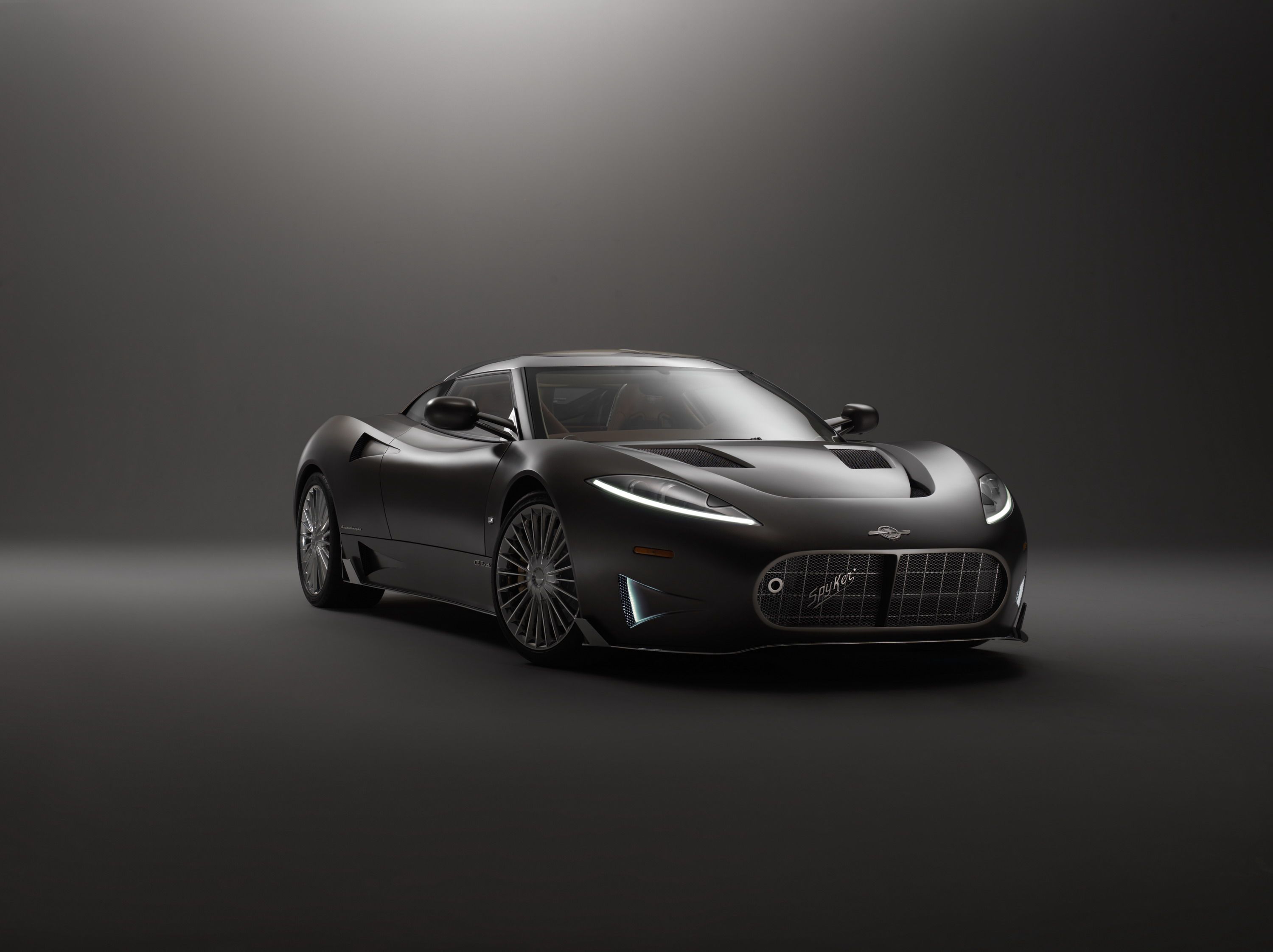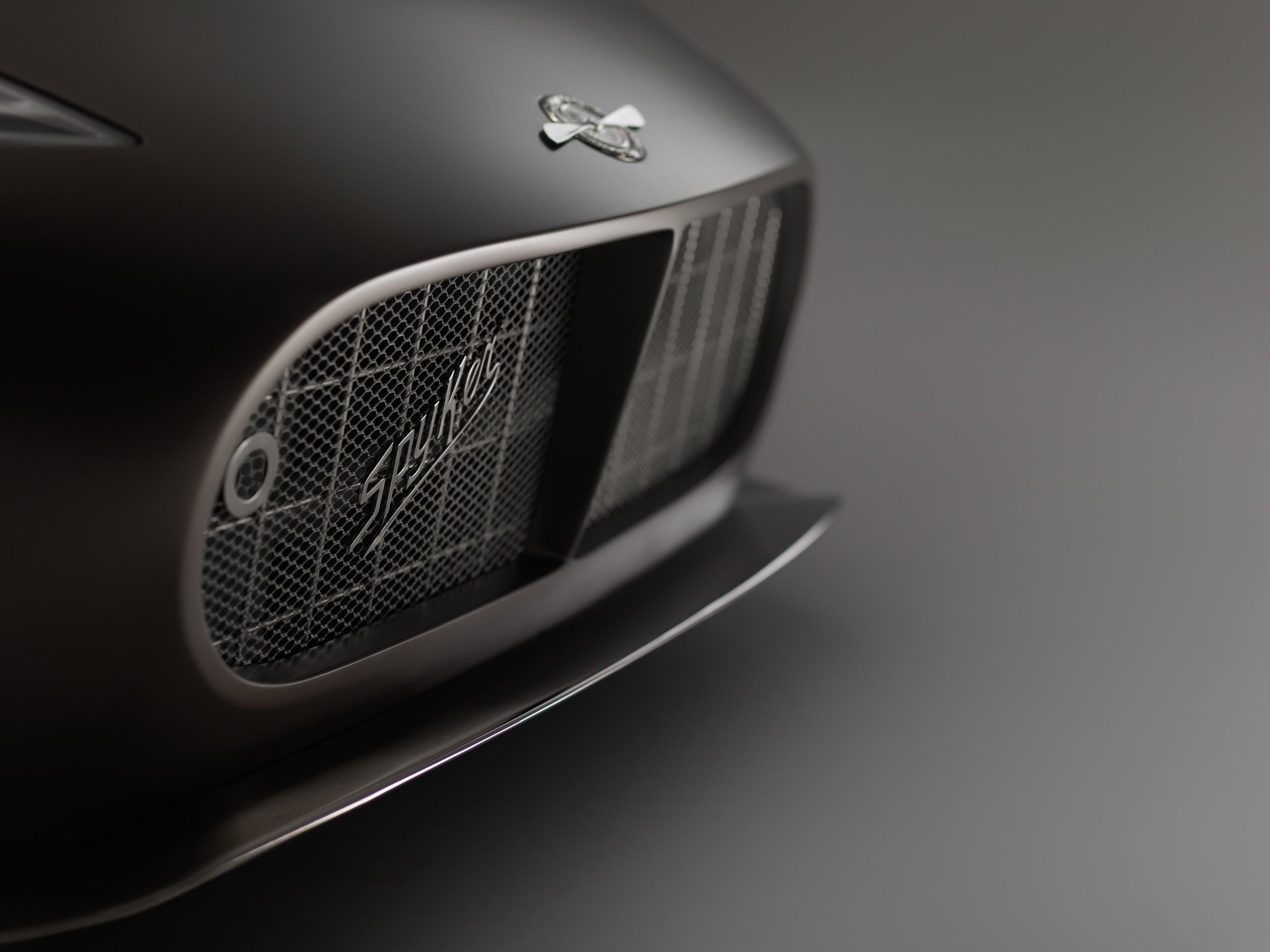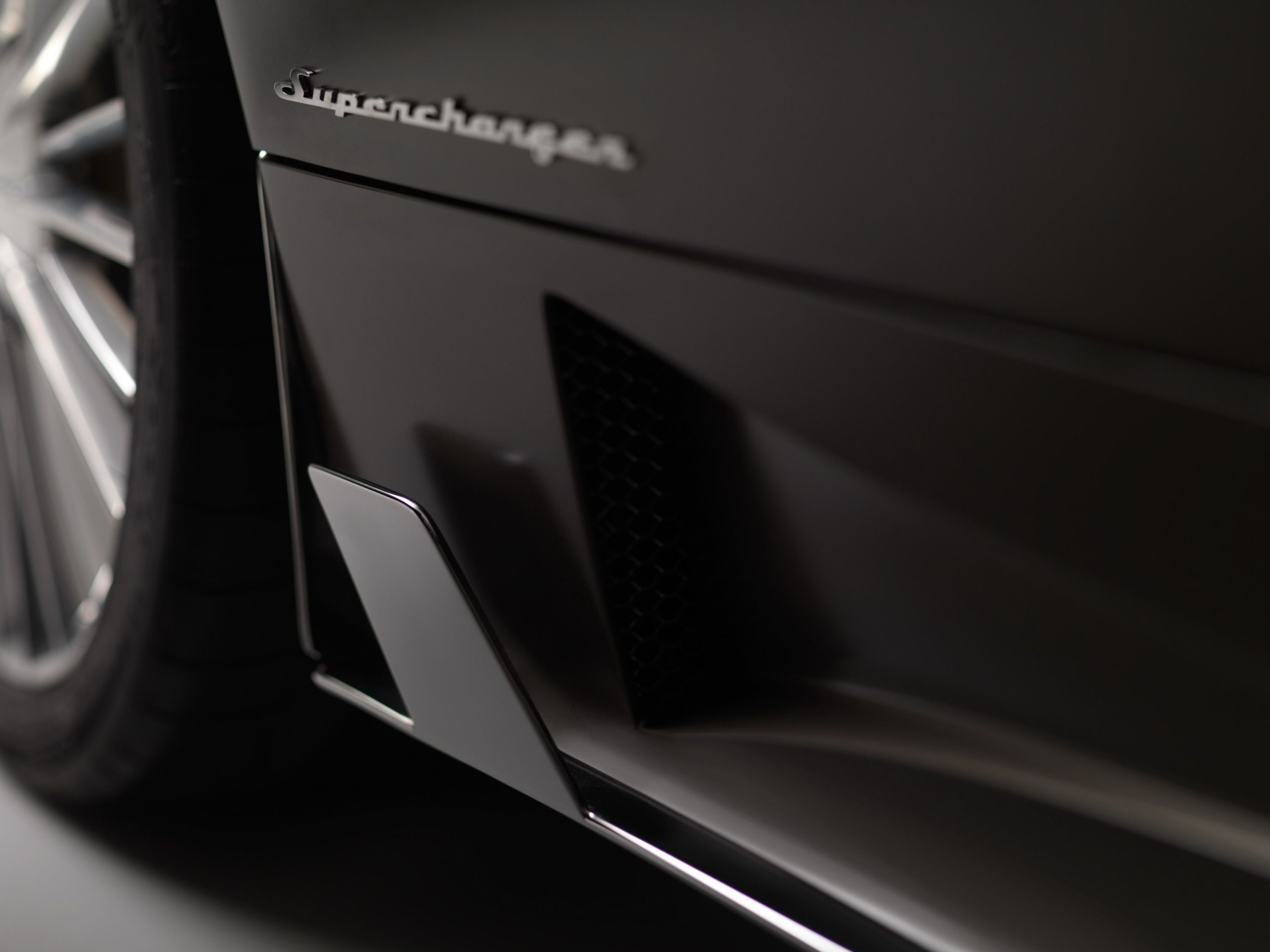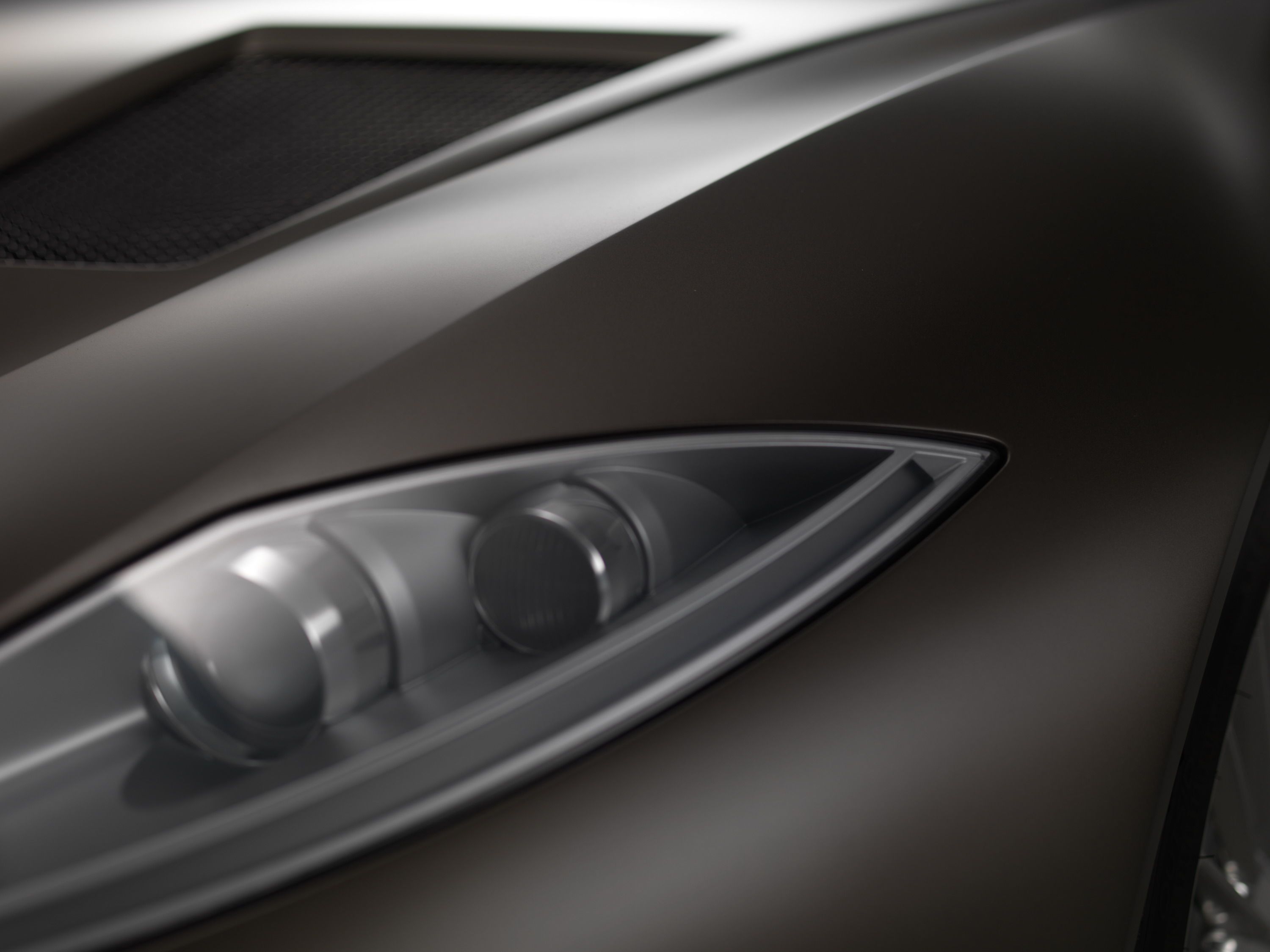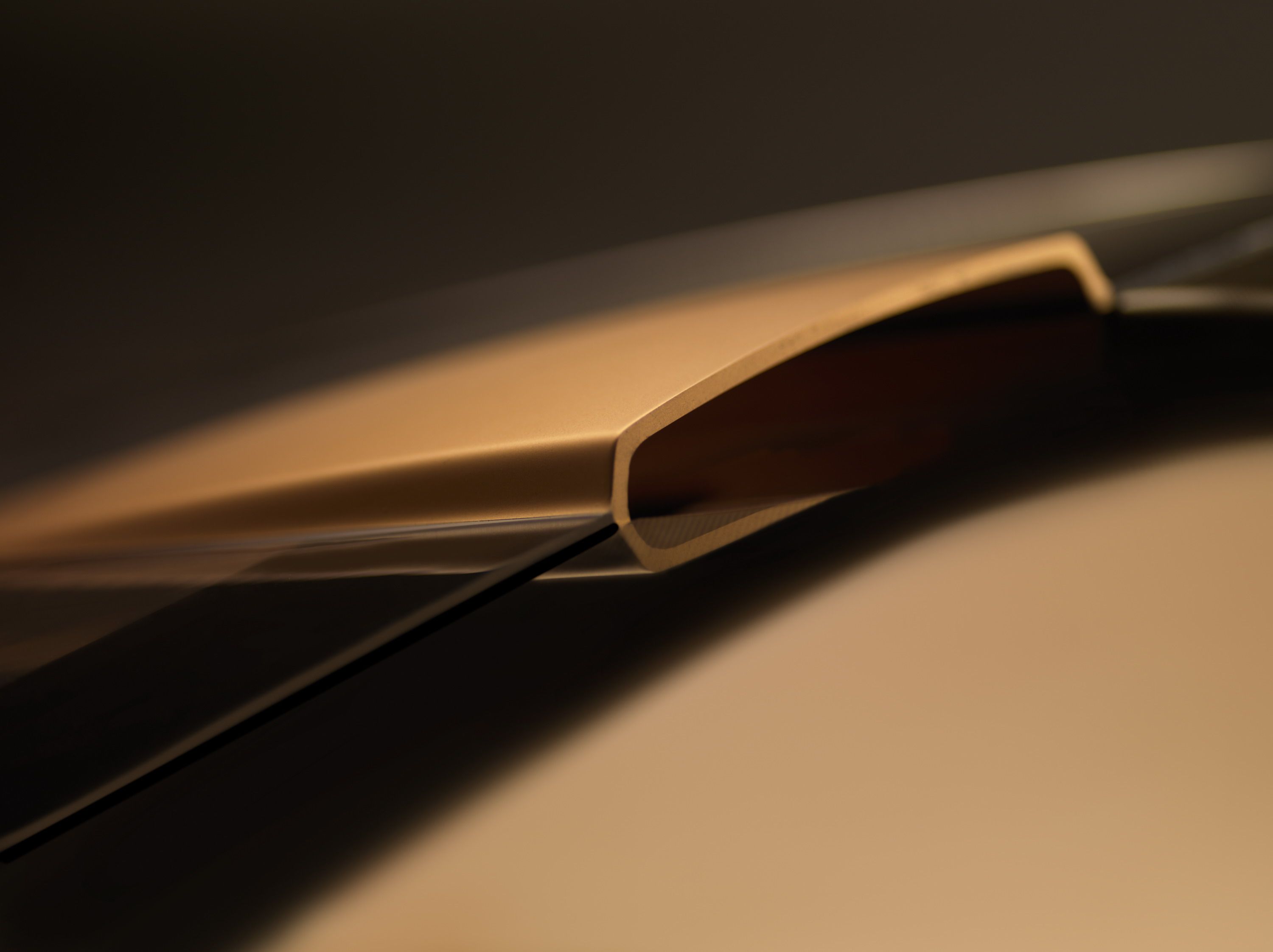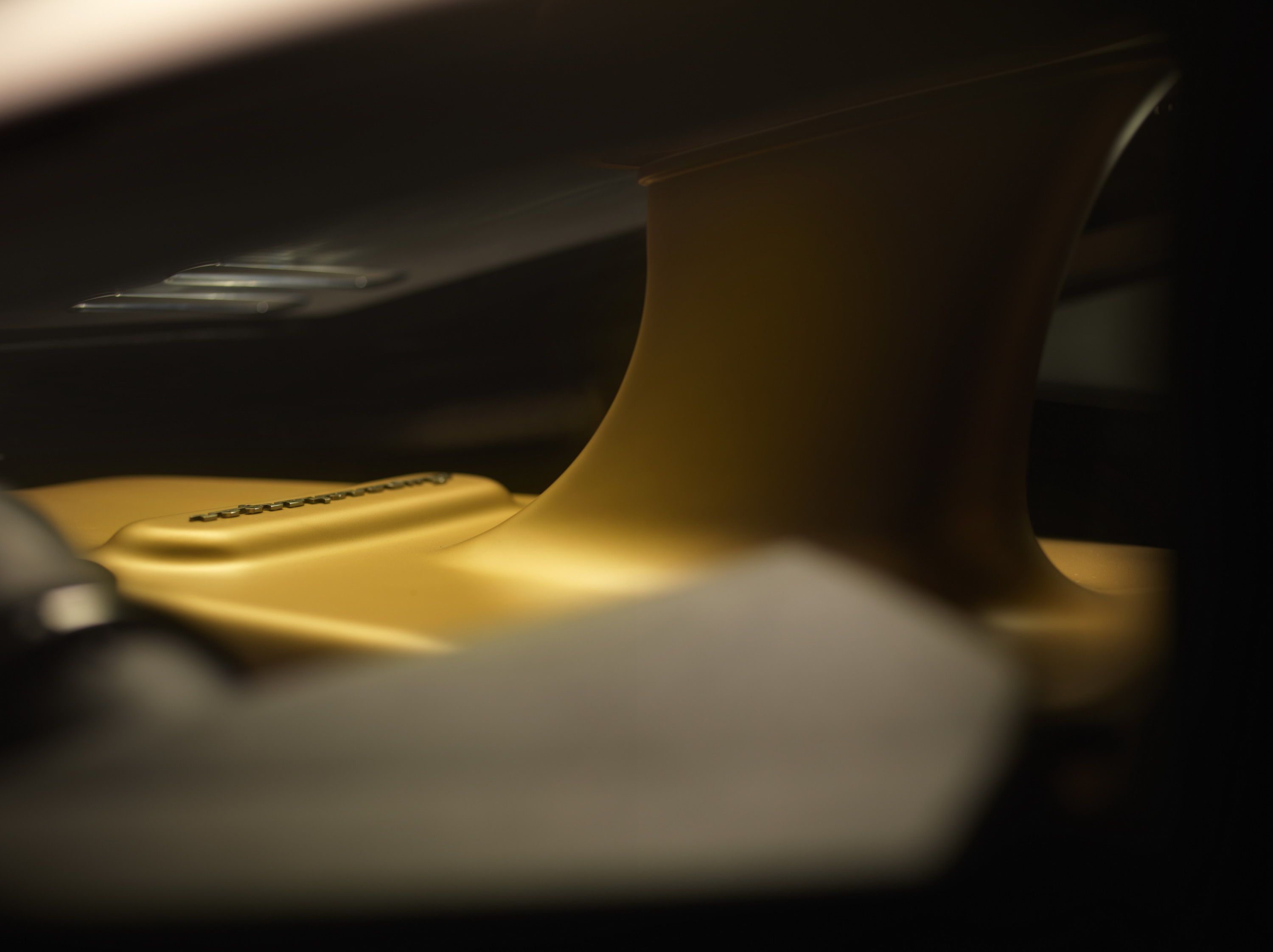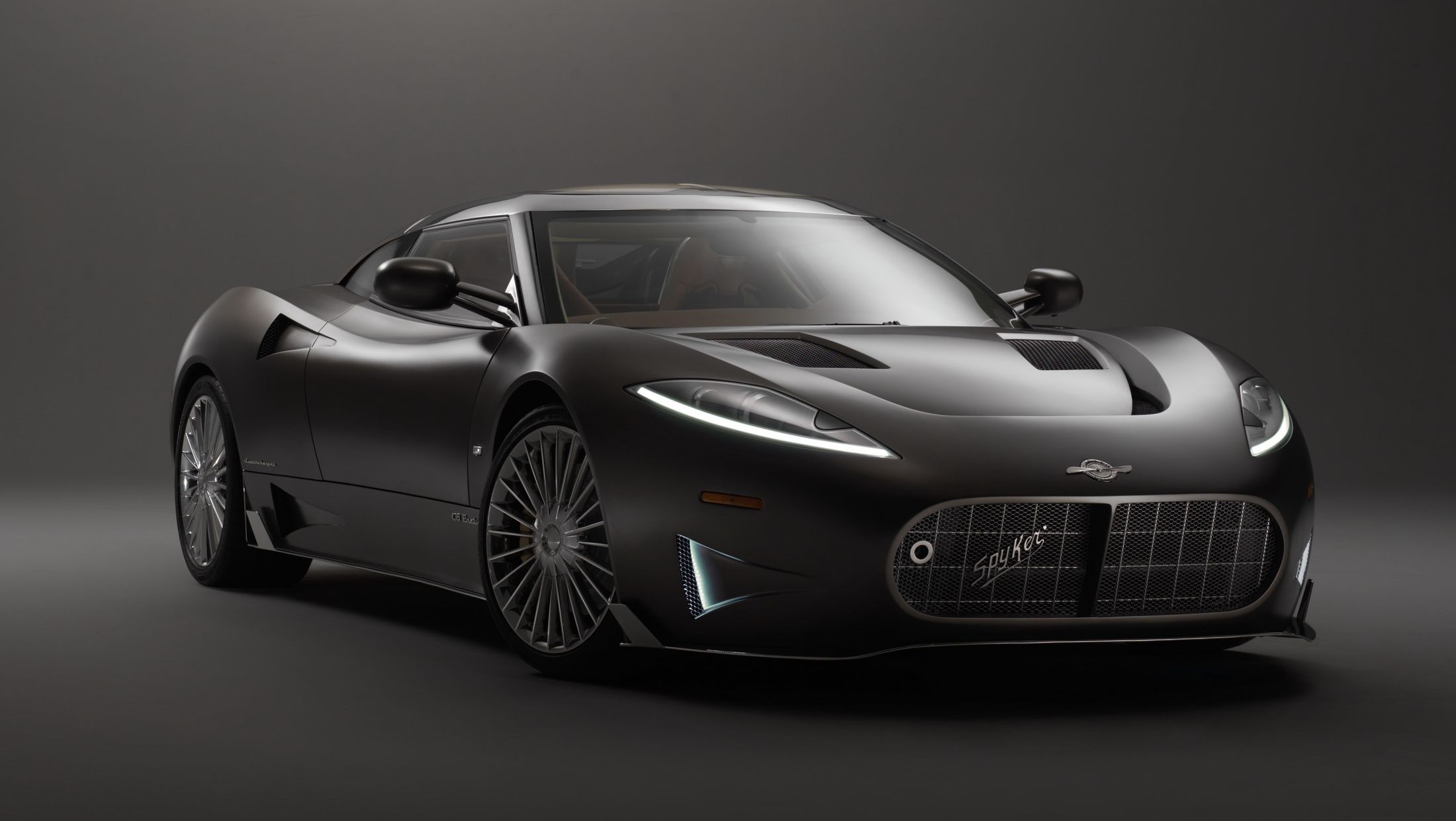Spyker->ke84 has had its fair share of trouble in the past. There was that issue with GM,->ke1024 and then Spyker eventually filed for bankruptcy. That bankruptcy was declared null and void, but it was still a troubling time for the company. That’s ok, though, because Spyker is back and has even debuted a new C8 this year at the Geneva International Motor Show. Dubbed the Preliator, it's the third generation C8, and it's said to be the “ultimate translation” of Spyker’s aviation heritage to a “road jet” or “plane without wings.”
The name “Preliator” means fighter or warrior in Latin, so it's no surprise Spyker chose that name for its new C8. At the unveiling in Geneva, Victor R. Muller, Spyker’s Founder and CEO, said, “The greatest man in our industry, Enzo Ferrari, once said: ‘What’s behind you, doesn’t matter.' What does matter is the fact that we have returned to Geneva today to unveil the worthy successor to the Spyker C8 Aileron, launched right here in 2009, of which the last five units are being assembled in our new production facilities in Coventry, the United Kingdom.”
So, Spyker hasn’t even finished producing the previous generation and has already debuted the next. The question is – does the C8 Preliator differ enough from the previous generation to suffice as a new model? Well, it's still hand built, and from a glance, it looks to be an interesting car, so let’s dive on into this review and see what is going on with Spyker’s new C8 Preliator.
Updated 03/30/2016: Spyker announced U.S. prices for its new C8 Preliator at the 2016 New York Auto Show where the sports car made its North American debut. The car will be limited to only 50 units worldwide and will be offered with both manual and automatic transmission. Check the "Prices" section for more details.
Continue reading to learn more about the 2016 Spyker C8 Preliator.
2017 Spyker C8 Preliator
- Make: Array
- Model: 2017 Spyker C8 Preliator
- Engine/Motor: V8
- Horsepower: 517 @ 6800
- Torque: 443 @ 3500
- [do not use] Vehicle Model: Array
Exterior
At first glance, it's easy to tell that this model is a Spyker C8, but it looks like more of a facelift than a new generation. Up front, the Preliator has the same large oval grille, but it now features a vertical louver right in the middle with a Spyker badge positioned to one side. The headlights take the same shape as those on the old C8, as does the hood. The hood, however, now has large, wide-open vents as opposed to the smaller, staggered vents on the Aileron’s hood. To the corners of the front fascia, thin, vertical vents make way for LED running lights. A thin front spoiler is positioned below the front fascia, with upswept wings where the spoiler meets the front wheel arches.
To the sides, there is definitely a change in profile between the Aileron and the Preliator. That lower body line that separates the doors and rear quarters from the tall side skirts still runs between the two wheel arches, but down below, a small wing has been added at the front of the rear wheel arch. The round vents behind the door have been replaced with more aerodynamic rectangular units that sit vertically. Cutouts in the body make it look like the body fades away into the vent – it’s a nice touch, really. The rear quarters are exceptionally dominating on the Preliator. That sweeping body line from the side view mirrors swoops downward on the doors before swooping up and over the rear quarters to help form those muscular rear haunches.
To the rear, the rear lid is flat, with an LED light strip running the full width of the rear end. The LED tail lamps are created out of stainless steel, and feature bright LED rings around the outside, with LED lighting on the inside to simulate something similar to the appearance of a jet turbine. A large mesh insert surrounds the taillights. Down below, a large rear diffuser provides some functional vents and makes way for dual oval exhaust outlets with a large “C8 Preliator” badge between them. Even the roof scoop on the Preliator has been replaced with a flatter, more aerodynamic scoop. Altogether, it’s not a bad package, but this is what the C8 should have looked like from the beginning.
Exterior Dimensions
|
Length |
4628 MM (182.2 Inches) |
|
Width |
1953 MM (76.9 Inches) |
|
Height |
1202 MM (47.3 Inches) |
|
Wheelbase |
2725 MM (107.3 Inches) |
|
Front track |
1625 MM (64.0 Inches) |
|
Rear track |
1645 MM (64.8 Inches) |
Interior
Inside, you'll find all of the smooth and unique details you would expect in a hand-built machine. The car on display in Geneva features Saddle interior with white honeycomb stitching and an ivory leather headlining. At the time of purchase, consumers can choose between 14 standard colors, but Spyker will provide any color requested by its customers as an option. The dash has been redesigned compared to the Aileron. There are still two round gauges ahead of the steering wheel, but the display screen in the middle is now gone. There are several small, circular lights between the two gauges. The forward section of the dash is done in what looks like smooth stainless steel.
The center console looks quite similar to that of the Aileron, with four circular gauges on top, a number of switches below them, two HVAC vents, and three more circular gauges – clearly simulating that of an airplane cockpit. And, let’s not forget about that weird joystick-like shifter that runs from the front of the center console to the rear of the vehicle.
The Preliator comes with a heads-up display that also functions as a navigation system. Since the demand for a sound system has increased, every Preliator comes with a high-end sound system with digital radio, Bluetooth interface, and Apple iPhone connectivity.
Drivetrain
The C8 Preliator is powered by Audi’s->ke14 4.2-liter V-8, but it's been supercharged and now delivers 517 horsepower and 443 pound-feet of torque. The engine is mated to a Getrag, six-speed manual transmission with gear ratios that are matched to the engine. A ZF six-speed automatic with paddle shifters is an option, and like the Getrag, it has Spyker’s trademark exposed gear change mechanism. All told, the C8 Preliator can hit the 62 mph sprint in 3.7 seconds and has a top speed of 201 mph. Not too bad, if I say so myself.
The C8 Preliator is equipped with independent double-wishbone suspension from Lotus->ke49 in the front and rear. The system includes front and rear stabilizer bars, mono-tube dampers, coilover steel springs, and anti-dive/anti-squat setup for improved handling and agility. When possible, the suspension was made with forged aluminum to help fight unsprung weight. The 19-inch, Turbofan wheels are wrapped in 235/35 series tires in the front and 295/25 series tires in the rear. Needless to say, Spyker went out of its way to make sure the C8 Preliator stays on the ground despite, its aviation-based design cues.
Drivetrain Specifications
|
Type |
90 degree V8 with VVT and compressor |
|
Capacity |
4.2-litre, 4172 cc |
|
Bore & Stroke |
84.5 x 93.0 mm |
|
Compression ratio |
11.0:1 |
|
Max power |
517 HP @ 6,800 RPM |
|
Max torque |
443 LB-FT @ 3,500 RPM |
|
Max revolutions |
7200 rpm |
|
Valves |
40 (5-per-cylinder) |
|
Fuel system |
Multi-point fuel injection |
|
Exhaust system |
Stainless steel with active bypass valves |
|
0-100 kph (62 mph) |
3.7 seconds |
|
Max speed |
322 KM/H (201 MPH) |
Prices
U.S. prices for the C8 Preliator will start from $354,990 with the manual gearbox and from $362,990 with the automatic transmission. The stickers do not include options and taxes. While it may seem like a lot for a sports car that doesn't have a Ferrari or Lamborghini badge, the C8 Preliator's price isn't that outrageous given production will be limited to only 50 examples worldwide.
Competition
The 570GT is McLaren's->ke284 newest offering in its entry-level Sports Series and is one of those “daily driver” supercars->ke177 that should pose some pretty stiff competition for the Preliator – at least on the road, anyway. The McLaren 570GT starts out below $200,000, so it will probably beat the Preliator right off the bat as far as pricing goes, but the reason I chose it as a competitor is because of its specifications. The 570GT is power by McLaren's 3.8-liter engine, and produces 562 horsepower and 443 pound-feet of torque. Power is routed through a seven-speed SSG transmission and enables the 570G to hit a 60 mph sprint in 3.4 seconds with an estimated top speed of 204 mph. So, if you’re an aviation guy, the Preliator is probably right up your alley, but if all you want is a 500 horsepower supercar that won’t set you back $500,000, you might want to consider the 570GT.
Read the full review here.
Ferrari California T
The California T is basically considered the Ferrari->ke252 you buy if you simply want a Ferrari on a budget. Like the 570GT, it starts out below $200,000. Powered by a 3.9-liter V-8, the California T makes the 60 mph sprint in 3.6 seconds and has a top speed of 196 mph. Sure, it has more of a sports car look to that the Preliator, but it still has 560 horsepower and 557 pound-feet of torque on tap that is delivered to the rear wheels through a seven-speed dual clutch transmission. Even as a “budget” Ferrari, you’ll find the cabin is rather comfortable and functional, and it still provides exactly what you would expect from Ferrari. For the 2017 model year, the California T will be offered with a high-performance handling package that should help give it an edge over the competition.
Read the full review here.
Conclusion
I have a bold appreciation for Spyker and the effort it put into refining the C8. I still think the Preliator should be considered as more of a facelift than a new generation, but we’re not exactly talking about a Ford Focus->ke440 or a Mercedes S-Class->ke359 either. We’re talking about a hand-built car that oddly enough shares a heritage with aviation. Personally, I’m not a fan of the whole airplane feel inside the car, but I think it is pretty cool to look at. Those who have a passion for flying can surely appreciate the effort that Spyker went to keep the car more plane-like and less futuristic. I’m kind of curious why Spyker didn’t go with an all-electric->ke1030 drivetrain or at least a hybrid->ke147 drivetrain. Throw a couple of electric motors and a battery back in there, and this baby could easily pump out 700 horsepower. Maybe Spyker is just hanging onto that idea for the future – you never know, maybe the brand will produce a car with wings someday.


